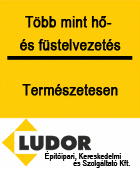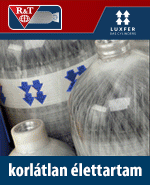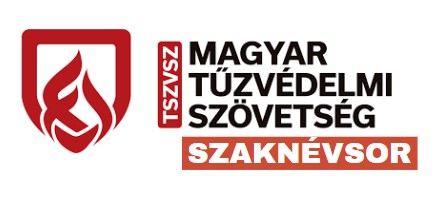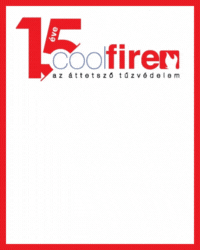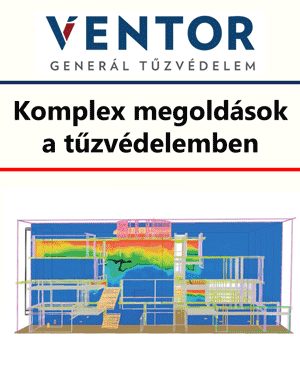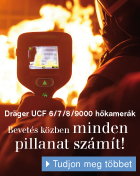|
Híreink Szakmai linkek Szaknévsor |
ISCFEDM – Section A, Fire Engineering0000. 00 00. 11:11 This page contains the presentations of Section A of the International Scientific Conference on Fire Engineering and Disaster Management 2021. (Az oldal a Tűzvédelmi Mérnöki és Katasztrófavédelmi Nemzetközi Tudományos Konferencia angol nyelvű előadásainak anyagait tartalmazza.) Table of contents for this section(Click the links below to jump to the desired presentation. Be advised: page load may be slow due to the embedded YouTube-videos. Please allow up to 1-2 minutes for the whole page to load.)
Subsection 1 Xu, Q.: Evaluate the Flammability and Fire Behavior of Wood of Ancient Buildings Kopecskó, K: The vulnerability of Portland cement, the advantage of geopolimer
Subsection 2 Nagy B - Érces G - Hortobágyi - Hesz J: Evaluation of BIM-based workflows in fire safety engineering Érces N,-Kajtár, L: The impact of a conventional operated biomass boiler on the environment
Subsection 3 Veresné Rauscher, J: Evacuation scenarios and repeated runs for evacuation simulations Vass, Gy-Érces- G-Rácz, S: Fire protection in smart cities Nagy, K.: How Different Kinds of Built-in Fire Prevention Equipment Work Together Xu, J.: Tree Seed Fibers Flammability Analysis by MCC and TGA
Subsection 4 Gyapjas, J. Haris, R.: Fire Safety in building construction Péter Tóth: New Hungarian standard for testing facade fire propagation Svetlík, J – Makovická Osvaldová, L:Temperature on car doors exposed to fire – pre-test A. Majlingova, P. Tischler: Compartment Fire Modelling
Subsection 1Xu, Q.: Evaluate the Flammability and Fire Behavior of Wood of Ancient BuildingsAbstract: Wood is one of the main building materials of ancient architecture. The frequent ancient wooden building fires causes tremendous losses to the building itself and the cultural relics in the building. Exploring the law of fire occurrence and development of ancient wooden buildings is of great significance to ensure the safety of ancient buildings.
Hajdu, F., László, G., Kerekes, Zs., Csápaiová, N., Kuti, R: Examination of fire spread in simulation environmentAbstract
Aim of the research:
She has been working for the Ministry of Interior of the Slovak Republic since 2015 as a professional firefighter. Her assignment is fire investigation at the Fire and Rescue Corps of the Slovak Republic.
Zsuzsanna Kerekes was born 1958 in Budapest. She began her hight studies in 1976 at the Pannon University in Veszprém, and obtained the MSc degree in chemical engineering, silicate chemistry specialization. She began her dr.univ studies in 1981 at the Doctoral School of Budapest University of Technology Faculty of Chemical Technology and Biotechnology. She has been an university lecturer since 1999-2020 at Ybl Miklós Faculty of Architecture and Civil Engineering Fire-safety Engineering Óbuda University as fire protection laboratory leader. She obtained a PhD degree in 2015 and habil degree in 2019. Instructor since 2019 at the University of Public Service. She has been working in her profession for 40 years in various fields: material structure research, ceramics, glass, analytics. Her research topic is “research and development combustion mechanism of non-combustible and combustible materials,”
Kopecskó, K.: The vulnerability of Portland cement, the advantage of geopolimerKatalin Kopecskó Associate Professor at the Department of Engineering Geology and Geotechnics Budapest University of Technology and Economics in Hungary. Graduated in Chemical Engineering (1990) and has postgraduate degree in Concrete Technology (2004). She has her PhD degree in Civil Engineering since 2006. Her PhD thesis was prepared on “Chloride ion binding capacity of steam-cured cement clinkers and cements”. She teaches Chemistry for Civil Engineers in BSc and Material Science for CE in MSc as well as PhD subjects (Durability of Construction Materials; Relationship between structure and behaviour of concrete, Alkali activated materials in civil engineering). Her research fields are: deterioration processes and durability of construction materials and concrete, hydration of cement and supplementary cementitious materials, biomineralization, X-ray diffraction (XRD) and thermal analyses (TG/DTG/DTA). She is a member of: the International Federation for Structural Concrete fib; the Hungarian Group of fib; Hungarian Standards Institution - Technical Committee MSZT/MB 102 (Cement and Lime); Scientific Committees of several International Conferences. Number of publications: 124. ORCID: 0000-0002-7169-966X.
Nagysolymosi, Á., Kopecskó, K., Kerekes, Zs.Restás, Á: Structural changes of fiber-reinforced composite plastics under the influence of heat
Katalin Kopecskó Associate Professor at the Department of Engineering Geology and Geotechnics Budapest University of Technology and Economics in Hungary. Graduated in Chemical Engineering (1990) and has postgraduate degree in Concrete Technology (2004). She has her PhD degree in Civil Engineering since 2006. Her PhD thesis was prepared on “Chloride ion binding capacity of steam-cured cement clinkers and cements”. She teaches Chemistry for Civil Engineers in BSc and Material Science for CE in MSc as well as PhD subjects (Durability of Construction Materials; Relationship between structure and behaviour of concrete, Alkali activated materials in civil engineering). Her research fields are: deterioration processes and durability of construction materials and concrete, hydration of cement and supplementary cementitious materials, biomineralization, X-ray diffraction (XRD) and thermal analyses (TG/DTG/DTA). She is a member of: the International Federation for Structural Concrete fib; the Hungarian Group of fib; Hungarian Standards Institution - Technical Committee MSZT/MB 102 (Cement and Lime); Scientific Committees of several International Conferences. Number of publications: 124. ORCID: 0000-0002-7169-966X. Zsuzsanna Kerekes was born 1958 in Budapest. She began her hight studies in 1976 at the Pannon University in Veszprém, and obtained the MSc degree in chemical engineering, silicate chemistry specialization. She began her dr.univ studies in 1981 at the Doctoral School of Budapest University of Technology Faculty of Chemical Technology and Biotechnology. She has been an university lecturer since 1999-2020 at Ybl Miklós Faculty of Architecture and Civil Engineering Fire-safety Engineering Óbuda University as fire protection laboratory leader. She obtained a PhD degree in 2015 and habil degree in 2019. Instructor since 2019 at the University of Public Service. She has been working in her profession for 40 years in various fields: material structure research, ceramics, glass, analytics. Her research topic is “research and development combustion mechanism of non-combustible and combustible materials,”
Subsection 2Nagy B - Érces G - Hortobágyi - Hesz J: Evaluation of BIM-based workflows in fire safety engineeringAbstract: Building information modelling and management (BIM) is a process supported by various tools, applications and technologies involving the generation, optimization, and management of digital representations of physical and functional characteristics and information of constructions throughout its entire lifecycle. BIM can be used to provide, or store information related to fire safety. Some of these applications are known and used already, however, many possibilities are nowadays still in the research and development. In our research, we evaluated the possible BIM-based individual applications based on scientific literature and composed a workflow of a construction project that is organizing the use of engineering design and management involving BIM. We discussed the possibilities of BIM applications throughout the analysis of building constructions for fire loads, fire and smoke propagation and evacuation simulation, integrated smart monitoring systems for fire alarm and incident management as well as innovative fire prevention solutions such as AR/VR applications. Our research goal is to facilitate the interconnection of BIM engineering applications and fire protection. We concluded that BIM can be used throughout the whole lifecycle of a building project and all fire safety engineering applications can optimize and generate changes in the building design if these assessments interact to each other and use the same dynamically developing BIM model. Keywords: building information modelling, innovative engineering methods, fire safety engineering
Dipl. eng. Gergő Érces, PhD., architect, fire protection engineer, University of Public Service, Faculty of Law Enforcement, Institute of Disaster Management, Department of Fire Protection and Rescue Operations Management, associate professor. After obtaining an MSc degree in architecture from the Budapest University of Technology and Economics in 2009, he received a fire protection engineering certificate in 2011 at the Ybl Miklós Faculty of Architecture of Szent István University. In the field of technical sciences, he obtained a PhD academic degree in 2019 at the Doctoral School of Military Engineering at the University of Public Service. His career started as a professional firefighter at the Budapest Fire Department in 2010, where he worked in the field of fire investigation, and from 2012 he worked at the Capital Disaster Management Directorate in the field of fire prevention. Since 2017 he has been a lecturer in fire prevention courses at the Department of Fire Protection and Rescue Operations Management of the Institute of Disaster Management of the Faculty of Law Enforcement at the University of Public Service. At the university, he works as a research engineer in the field of disaster management and fire prevention. Balázs Nagy, PhD assistant professor, Budapest University of Technology and Economics, Faculty of Civil Engineering, Deptartment of Construction Materials and Technologies 3. Műegyetem rkp, 1111 Budapest, Hungary email: nagy.balazs@emk.bme.hu, ORCID: 0000-0003-1373-5930 Col. József Hesz, PhD associate professor, University of Public Service, Institute of Disaster Management, Department of Fire Protection and Rescue Operations Management
Érces N,-Kajtár, L: The impact of a conventional operated biomass boiler on the environmentAbstract: In the case of solid-fuel installations, there is still a large number of traditional wood-fired equipment operating without proper combustion control. Depending on the economic and infrastructural development, these devices are one of the main sources of air pollution. Of course, the emission of pollutants depends primarily on the quality of the fuel or on the behavior of the user, but can also be significantly reduced with the proper boiler setting. In our study, we tested the operation of a conventional, manual-feed, wood-fired boiler for household use, depending on the opening angle of the combustion air control door. Studies have shown that a constantly changing position of the draft control door has an adverse effect on carbon monoxide emissions as well as the energy produced. In the case of a constant draft door setting, the preset values that can be considered ideal for energy yield and CO emissions were determined for the two fuel types.
Restás, Á., Lucza, E., Szép J., Kerekes, Zs.: Reuse of Polyethylene Waste as Building Material in view of Fire ProtectionAbstract: In the course of our work, we examined different types of polymer tiles from a fire protection point of view. We investigated their behavior against radiant heat. In addition, we performed a small flame propagation test on them. The standard tests provide an opportunity to compare the data collected during the tests with other façade cladding currently used in construction practice, as well as with thermal insulation materials. The aim of the tests is to get an answer to which fire protection classes the tiles we are currently examining can be classified and what kind of construction task they are suitable for performing according to the current regulations
Zsuzsanna Kerekes was born 1958 in Budapest. She began her hight studies in 1976 at the Pannon University in Veszprém, and obtained the MSc degree in chemical engineering, silicate chemistry specialization. She began her dr.univ studies in 1981 at the Doctoral School of Budapest University of Technology Faculty of Chemical Technology and Biotechnology. She has been an university lecturer since 1999-2020 at Ybl Miklós Faculty of Architecture and Civil Engineering Fire-safety Engineering Óbuda University as fire protection laboratory leader. She obtained a PhD degree in 2015 and habil degree in 2019. Instructor since 2019 at the University of Public Service. She has been working in her profession for 40 years in various fields: material structure research, ceramics, glass, analytics. Her research topic is “research and development combustion mechanism of non-combustible and combustible materials,” Das,O-Restás,Á-Försth, M-Sas, G-Hedenqvist M: Naturally-occuring Bromophenol to develop fire retardant gluten bioplasticsOisik Das is an employee at the structure and Fire group of Department of Civil, Environmental and Natural Resources Engineering at Luleå University of Technology (LTU). Oisik Das has extensive background in materials research including biocomposites, biochar, polymer processing, material characterisation, nanoindentation, pyrolysis, etc. His special interest is flammability of composite structures and materials wherein he investigates the reaction-to-fire behaviour of polymeric composites used for structural and semi-load bearing applications. Oisik Das also conducts research on novel fire retardants such as naturally-occurring lanosol, which is obtained from marine red algae. Additionally, his recent research interests pertain to the fire behaviour of concrete structures and wooden façades. Oisik Das was one of the first researchers to demonstrate a balance between mechanical and fire-retardant behaviour of composites using sustainable biochar. He is currently leading a STINT project, that is attempting to propagate the aforementioned phenomenon using biopolymers and renewable materials. Oisik Das is very active in publishing and in 2020, he published over 20 journal articles. His current h-index is 20 with over 1500 citations. He has authored over 60 peer-reviewed articles; 7 book chapters and also an academic textbook related to fundamental polymer science. Oisik Das has 7 years of teaching experience in four different countries of Sweden, Singapore, New Zealand and India. He is very passionate about pedagogic activities and have recently published an article stating some key strategies for continuing experimental research during university and lab closures as a result of pandemics.
Before taking his current position in 2020, Gabriel has primarily worked in the R&D sector in Norway as researcher, scientific leader or manager of applied research projects within bridge and dam engineering. His research is focused on promoting sustainability by prolonging the life of existing structures. He believes in using a multidisciplinary approach, where the strength of one method mitigates the weakness of another one, to solve complex problems such as for example to find out what is the true capacity of a bridge. This implies to intertwine different methods, e.g., numerical analysis, monitoring, condition assessment, structural testing or reliability analysis, in a seamless and resource-effective way, i.e., applying the right tool or method at the right step. Other research interests include also the behavior of structures made out of the new generation of engineered materials, like for example UHPC, structures made out recycled materials resulted from demolitions, and the structural safety of structures exposed to elevated temperatures.
Subsection 3Veresné Rauscher, J: Evacuation scenarios and repeated runs for evacuation simulationsAbstract: The aim of the present study is to show what evacuation scenarios need to be examined during the evacuation calculations and according to which aspects they should be developed. I examined international regulations, recommendations, and literature data and compared them with domestic expectations and practices. Using an approach and examples, I show how usage patterns, geometric features, person characteristics and starting positions can influence the number and nature of evacuation scenarios. In addition, I show the extent of repeated runs due to the statistical settings of the input parameters and how it is worth evaluating the obtained results.
Vass, Gy-Érces- G-Rácz, S: Fire protection in smart cities
Dipl. eng. Gergő Érces, PhD., architect, fire protection engineer, University of Public Service, Faculty of Law Enforcement, Institute of Disaster Management, Department of Fire Protection and Rescue Operations Management, associate professor. After obtaining an MSc degree in architecture from the Budapest University of Technology and Economics in 2009, he received a fire protection engineering certificate in 2011 at the Ybl Miklós Faculty of Architecture of Szent István University. In the field of technical sciences, he obtained a PhD academic degree in 2019 at the Doctoral School of Military Engineering at the University of Public Service. His career started as a professional firefighter at the Budapest Fire Department in 2010, where he worked in the field of fire investigation, and from 2012 he worked at the Capital Disaster Management Directorate in the field of fire prevention. Since 2017 he has been a lecturer in fire prevention courses at the Department of Fire Protection and Rescue Operations Management of the Institute of Disaster Management of the Faculty of Law Enforcement at the University of Public Service. At the university, he works as a research engineer in the field of disaster management and fire prevention.
Nagy, K.: How Different Kinds of Built-in Fire Prevention Equipment Work TogetherAbstract Keywords: seamless cooperation of fire prevention equipment, full-scale fire tests, heat and smoke extraction, effective life protection, sprinklers
Association of Fire Prevention Engineers – chairman HFR TvMI – work group leader Hungarian Fire Prevention Association – work group leader Ludor Kft. – professional director Xu, J.: Tree Seed Fibers Flammability Analysis by MCC and TGAAbstract: Poplar and plane tree are widely planted as street trees in cities. The seed fibers of both two kinds of tree pose a significant fire risk. Microscale combustion calorimetry (MCC) and thermogravimetric analysis (TGA) were used to study the flammability of two kinds of fluffy seed fibers. Both Method A and B procedures were used in MCC tests, while TGA tests were conducted in Nitrogen and Air atmospheres. The peak heat release rate is higher for method B compared to method A at a given heating rate. From Method B, the net calorific value of the specimen gases, for poplar is 16.09 kJ/g and for plane tree is 16.65 kJ/g. These values are similar to other biomass namely, rice husk and wheat straw, which have high level of fire risk. Mr. JINHENG XU is now a sophomore in School of Chemistry, Nankai University, China. He conducts continuous research, primarily in the field of chemistry and fire engineering. He is currently doing a deep research in the topic of the flammability of tree seed fibres. Gyapjas, J. Haris, R.: Fire Safety in building constructionAbstract: The following presentation supports our claim that the representation of fire safety in the building construction is not optimal. The aim of our scientific research was to find typical insufficiencies by the method of focus group interviews and questionnaire. Twelve typical constructional insufficiencies were identified, whereof six stands out by occurrence. Fire safety professionals are rarely involved in the process of construction and obtaining occupancy permit. Constructional insufficiency in non-licensed building construction is also a common occurrence. Based on the results in this study we propose the optimalization of constructional fire safety.
Péter Tóth: New Hungarian standard for testing facade fire propagationAbstract: There is a continuous change in building technologies and in building materials. The risk of serious facade fires has been increased due to extensive use of combustible materials on facades during the last 20 years. The existing national testing and classification methods shall be reviewed and modified regularly in order to follow these changes. This presentation briefly describing the alterations and the new features of the Hungarian testing standard MSZ 14800-6:2020.
Svetlík, J – Makovická Osvaldová, L:Temperature on car doors exposed to fire – pre-testAbstract: Fires of passenger motor vehicles are a part of life. They can be seen in the streets at any hour, and most often happen when the vehicle is parked. The article deals with the effects of simulated fire on the structural elements of cars (doors) while recording the temperatures and the flow of radiant heat. The experiment was carried out in a fire room and verified the methodology of evaluating the behavior of car doors under thermal stress caused by a fire from a liquid spill. The results of experiments can serve as a basis for the car fire simulations in both enclosed and open spaces. Key words: car fire, temperature, experiment
He actively participates in solving scientific research tasks in the subject area. These are the tasks of international (FP7, IPCEI) and national grant schemes. He presents the results of his creative activity at international conferences and seminars, as well as through Erasmus + lecture mobilities in Poland, Hungary, Bulgaria, the Czech Republic, Slovenia, Croatia, Serbia and Spain.
A. Majlingova, P. Tischler: Compartment Fire Modelling
Ezt a hírt eddig 1503 látogató olvasta. |





